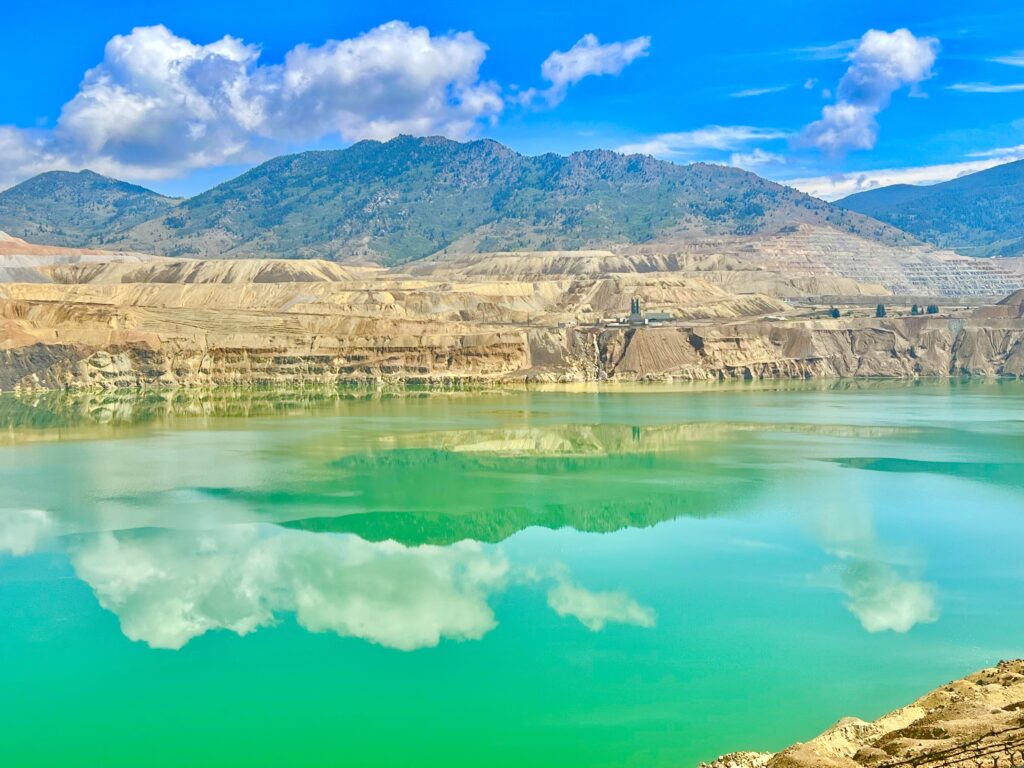Nestled in the Rocky Mountains of southwest Montana, the town of Butte was once known as the “Richest Hill on Earth”. Originally founded as a mining camp in 1864, Butte experienced rapid growth, and at one point was the largest city between Chicago and San Francisco. While gold and silver first attracted prospectors to Butte, it was copper that made the city famous. Immigrants came from all over the world to work in Butte’s mines, and at one point over 50 languages were spoken in town.
By the late 19th century, Butte was producing 25% of the world’s copper supply. This coincided with the electrification of America, a process that would require huge quantities of copper. Butte was in a prime position to cash in, and that’s exactly what it did. Butte became the richest town in America, producing more wealth per capita than anywhere else. Of course that wealth was concentrated, making some extremely wealthy, but at the same time provided high paying jobs for the immigrants flooding into town. The opportunities in Butte became so well known, that immigrants coming through Ellis Island were told, “Don’t stop in America, go straight to Butte!”.
Eventually Butte’s fortunes changed, and mining became less important to the local economy. But the scars are still there, look around town and you’ll see remnants of the glory days. Now the entire town is a National Historic Landmark District, one of the largest in the country, containing nearly 6,000 historic structures. While the town itself is interesting, I was most interested in the mining history. I spent a whole day exploring Butte, and saw plenty of interesting stuff. It was hard to narrow it down, but if you want a location that properly conveys the scale of mining operations in Butte, there’s no better place than the Berkeley Pit.
The Berkeley Pit

Butte’s early mining industry relied upon conventional mining techniques, primarily digging tunnels to reach underground deposits. Today there are over 10,000 miles of mining tunnels beneath the city. But eventually the technique of open pit mining was developed, rendering tunneling obsolete. The Berkeley Pit was one such open pit mine, and it is humongous. Developed by the Anaconda Copper Company in 1955, the Berkeley Pit measures 7000 feet long, 5600 feet wide, and 1600 feet deep. Operations at the mine ceased in 1982, and the pit has subsequently filled with 50 billion gallons of water.
The Berkeley Pit is now a Superfund site, with the water inside the pit being extremely contaminated. In addition to the normal concerns around industrial pollution, the Berkeley Pit has an additional problem. Migrating birds periodically attempt to land on the water, but it’s so contaminated, that they die if they land for more than a few hours. The solution involves a somewhat comical, yet effective set of preventative measures. Air cannons and sirens periodically sound, and as a final line of defense, there’s always an employee on site tasked with scaring the birds away with a rifle . The video below is worth a watch if you’re curious.
The Berkeley Pit has become a local tourist attraction, with over 35,000 people coming to see the pit each year. Standing on the observation deck overlooking the pit, it’s impossible not to marvel at its size. The aqua colored water and surrounding hills, also make the Berkeley Pit oddly scenic. If you just focus on the physical attributes, the pit probably isn’t that interesting. But when you consider the broader historical significance, a visit to Berkeley Pit can be quite fascinating. Butte sits at the intersection of I-15 and I-90 in southwestern Montana, so plenty of people drive through without ever stopping. If you ever find yourself passing by on a road trip, consider making a stop at the Berkeley Pit. It’s a quick stop, and you might find it surprisingly interesting.

50 billion gallons of water 😳😳😳That is one big hole.
One of the richest copper prospectors in Montana was William Clark. He became a US senator from the state of Montana, but was such a scoundrel that he was kicked out of the Senate. He built the original railway from Salt Lake City to the Pacific Coast of Los Angeles. He needed a place to water his trains so he picked a small desert town called Las Vegas. Ultimately, Las Vegas became the county seat of Clark county. It is the only surviving place named after one of history‘s greatest rapists of the environment. In his defense, Clark probably didn’t realize how he was vandalizing such pristine streams and lakes in Montana. However, his personal life was such a wreck that it probably wouldn’t have mattered to him if he had known the damage he was doing as long as he was making more money.